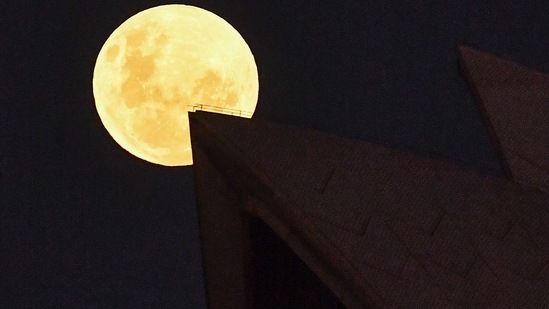
Nasa study predicts record flooding in 2030s due to Moon's 'wobble'
Climate change has caused sudden weather changes on Earth, which has led to flood in many countries, especially the United State. But now, a new study has linked extreme weather events with Earth's neighbour, the moon.
The study has been conducted by American space agency National Aeronautics and Space Administration (Nasa), which says that a 'wobble' in Moon's orbit combined with rising sea levels due to climate change will lead to devastating floods on Earth.
The study was published in the journal Nature Climate Change on June 21.
Called 'nuisance floods', these currently occur in coastal areas when the tide reaches about 2 feet above the daily average high tide. These events are much more problematic for businesses because they inundate the streets and homes, affecting everyday life.
These nuisance floods will become more frequent and irregular by mid-2030s, according to Nasa study. A majority of US coastline will see three to four times increase in high tides for at least a decade, according to the study.
It has also warned that these floods won't be spread out evenly through the year, and expected to cluster together over the span of just a few months.
“Low-lying areas near sea level are increasingly at risk and suffering due to the increased flooding, and it will only get worse,” said Nasa administrator Bill Nelson. “The combination of the Moon’s gravitational pull, rising sea levels, and climate change will continue to exacerbate coastal flooding on our coastlines and across the world."
Explaining the impact of the Moon on the flooding on Earth, the study's lead author Phil Thompson, an assistant professor at the University of Hawaii, said that the wobble in the Moon's orbit takes 18.6 years to complete. While the wobble has always been there, what makes it dangerous is that it will combine with the rising sea levels due to the planet's warming, said Thompson.
In half of these 18.6 years, the Earth's regular tides are suppressed: high tides are lower than normal and low tides higher than normal. In the other half, the effect is reversed, which is called the tide-amplifying phase of the Moon. The next time this cycle is expected in 2030s, which will severely affect the normal life, especially in coastal areas, according to Thompson.
https://ift.tt/2TWoWPa
Science




No comments:
Post a Comment